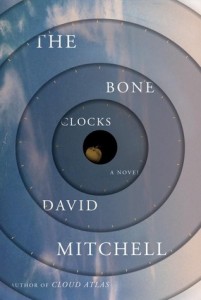[contextly_auto_sidebar id=”KUST1tJRtgkRnoQOLlZRPbrZOASSJtA8″]
I’M not sure there’s a novelist alive whose work I look forward to more than David Mitchell’s. I say this even while sharing some mixed feelings about his new novel. The parts of this that work — four and a half of its six parts — are simply spectacular. In fact, I can’t think of two many writers of any kind whose storytelling is so rich and engaging. The guy is simply unbelievable.
In any case, I spoke to him recently — asking him to describe his creative process and to address his critics — and led off my interview this way.
I just finished “The Bone Clocks,” and I’m thinking about your storytelling. You seem like the kind of jazz musician who can go up and play chorus after chorus after chorus without breaking a sweat. Is storytelling easy for you? It seems to be like a melody that just keeps unfolding.
Oh, thank you. Bless you. I sweat. I think all jazz saxophonists do. It’s also my job to conceal the fact that I’m sweating, and for that to be gone by the time it reaches the reader. So yeah, I go wrong and I go down blind alleys and bark at trees and follow red herrings. But I have to fix what goes wrong and rewrite and disassemble and re-assemble so that by the time it reaches your hands, it looks effortless. But no, it isn’t.
Regarding reviews of The Bone Clocks, my point of view is close to Pico Iyer’s in the New York Times Book Review, with a bit of Laura Miller’s Salon take mixed in. (Unlike Laura, I did not think one hysterical section was enough to ruin the entire novel.) Even with the slight stumble, I can’t wait to see what he comes up with next.

